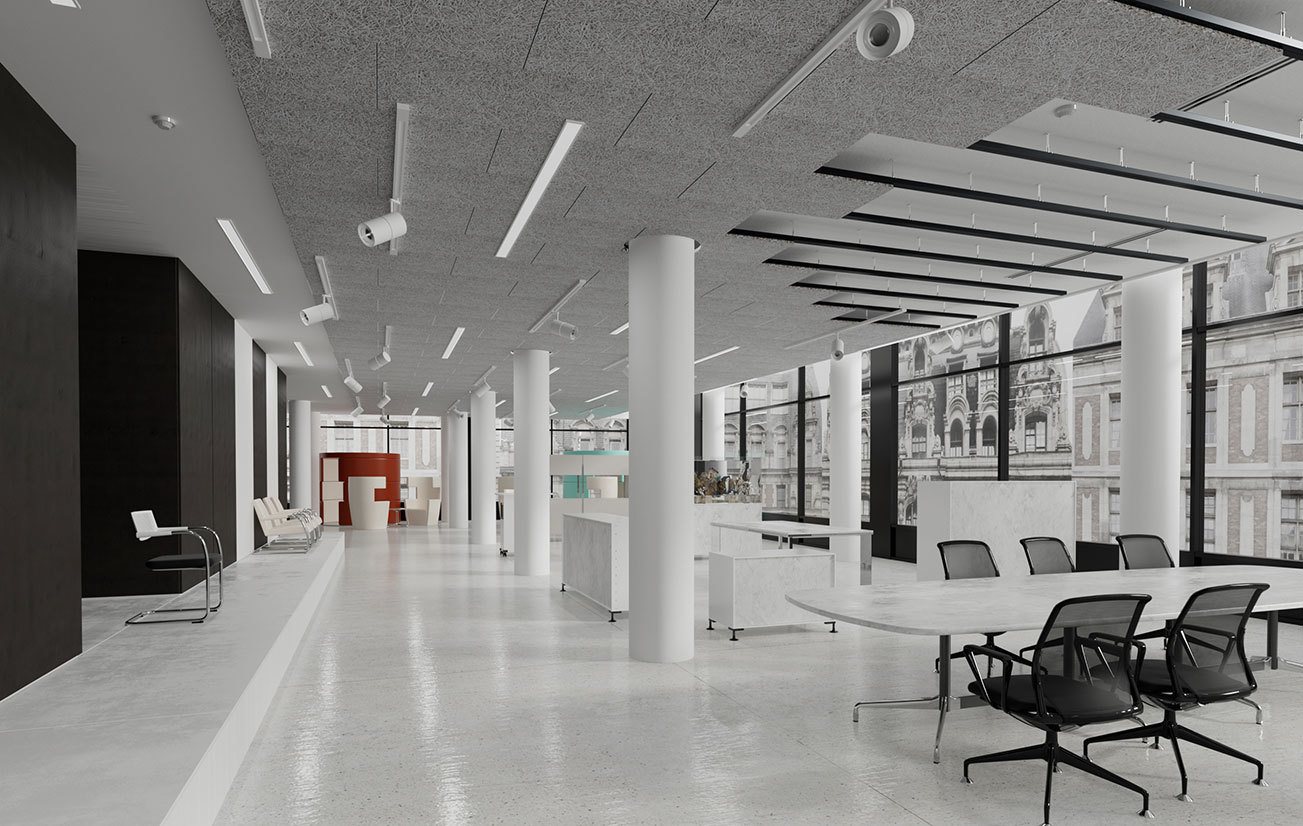The Fundamental Role of Acoustics
The Role of Acoustics in Architecture, Acoustics is the science that deals with the properties of sound and its transmission. When it comes to architecture, acoustics refers to how sound behaves within a space and how that behavior can be manipulated or controlled to create a desired auditory experience.
The role of acoustics in architecture can be broken down into several key aspects:
Speech Clarity:
In spaces where communication is essential, such as classrooms, boardrooms, and lecture halls, acoustics play a crucial role in ensuring that speech is clear and intelligible. Good acoustical design reduces background noise and reverberation, allowing people to hear and understand each other effectively.
Auditory Comfort:
In public spaces like theaters, concert halls, and churches, the goal is to provide a comfortable and immersive auditory experience. This requires careful consideration of sound reflections, absorption, and diffusion to create the right ambiance and prevent unpleasant echoes.
Noise Control:
In residential and commercial buildings, noise control is vital for creating a peaceful and productive environment. Effective acoustic design can reduce the transmission of noise between rooms and from external sources, enhancing the overall comfort of occupants.
Privacy:
Acoustics also play a role in ensuring privacy in spaces like hospitals, hotels, and offices. Soundproofing techniques can prevent confidential conversations from being overheard and maintain a peaceful atmosphere for occupants.
Cultural and Aesthetic Impact:
The acoustics of a space can contribute to its cultural and aesthetic identity. For example, the rich reverberation of a Gothic cathedral or the crisp sound in a modern concert hall both contribute to the unique character of these spaces.
Designing for Acoustics
Achieving the desired acoustic performance in a building involves a combination of architectural design, materials, and technology. Here are some key considerations in designing for acoustics:
Room Shape and Size:
The shape and size of a room have a significant impact on its acoustics. Long, narrow spaces tend to create strong echoes, while irregularly shaped rooms can scatter sound in unpredictable ways. Architects must choose room dimensions that align with the intended use and acoustic goals.
Materials:
The choice of building materials can affect sound absorption and reflection. For example, hard, reflective surfaces like glass and concrete can create sound reflections, while softer materials like fabric, carpet, and acoustic panels absorb sound. A balance between these materials is often necessary to achieve the desired acoustic performance.
Ceilings and Walls:
The design of ceilings and walls can include features like baffles, diffusers, and acoustic tiles to control sound reflections and diffusion. Additionally, double walls or insulated partitions can be used to improve noise isolation between rooms.
Sound Reinforcement:
In spaces like auditoriums and theaters, sound reinforcement systems are used to enhance and distribute sound to ensure uniform coverage. These systems include microphones, amplifiers, and speakers strategically placed to optimize sound quality.
Noise Control:
To prevent external noise from infiltrating a space, architects may incorporate measures such as double-glazed windows, heavy curtains, or acoustic seals around doors and windows. These solutions help maintain a peaceful indoor environment.
Technology:
Advancements in technology have led to the development of acoustic simulation software that can predict and analyze the acoustic performance of a space before construction begins. This allows architects to fine-tune their designs for optimal results.
Case Studies
To better understand the significance of acoustics in architecture, let’s explore a few notable case studies.
Sydney Opera House, Australia:
Designed by architect Jørn Utzon, the Sydney Opera House is renowned not only for its iconic shell-like structure but also for its exceptional acoustic properties. The concert halls within the Opera House were meticulously designed to provide outstanding sound quality for a variety of performances.
The Sistine Chapel, Vatican City:
The Sistine Chapel is famous for its stunning frescoes by Michelangelo, but it also boasts exceptional acoustics. The chapel’s architecture contributes to its ability to support choral music without the need for electronic amplification.
Walt Disney Concert Hall, Los Angeles:
Designed by architect Frank Gehry, this concert hall is a testament to the marriage of architecture and acoustics. Its unique curved surfaces and innovative acoustic treatments create a warm and immersive auditory experience for the audience.
The Whispering Gallery, St. Paul’s Cathedral, London:
This architectural marvel features a circular gallery where whispers can be heard clearly from one side to the other, despite the significant distance. The design of the dome allows sound to travel along the curved surface, illustrating how architectural elements can enhance acoustics.
Conclusion
Acoustics is a critical yet often underestimated component of architectural design. From facilitating clear communication in classrooms to creating awe-inspiring auditory experiences in concert halls, the role of acoustics in architecture is far-reaching. Effective acoustic design requires a deep understanding of sound behavior and the use of materials, technology, and architectural techniques to shape acoustic environments.
Architects and designers must prioritize acoustics as an integral part of their projects, considering the intended use and the experience they want to create for occupants. Whether it’s the intimate serenity of a library or the grandeur of a performance space, acoustics play a pivotal role in shaping our interaction with the built environment. As we continue to push the boundaries of architectural innovation, the importance of acoustics in creating spaces that sound good remains paramount.



